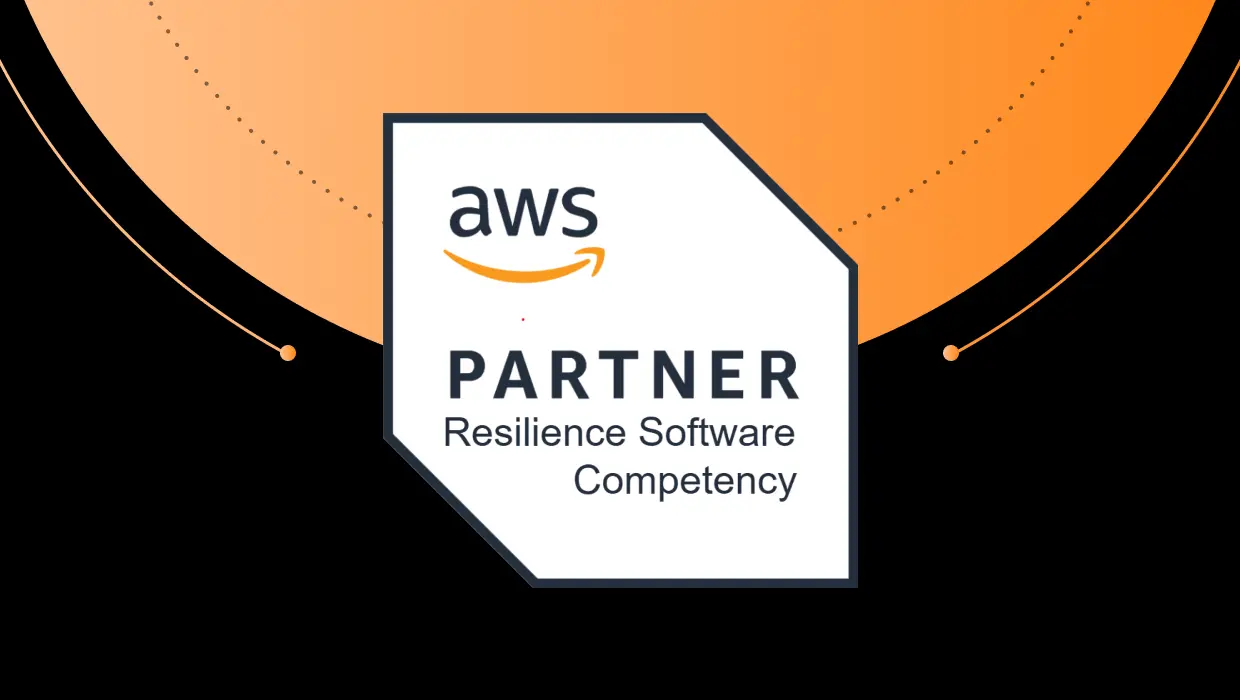Legacy application modernization is the process of taking a monolithic legacy application, breaking it into smaller pieces and moving them to the cloud. Legacy application modernization has many technical and business benefits. Yet, this transformation is challenging and must be handled with great care. This article takes a close look at various aspects related to the transformation.
Legacy Applications
A Legacy System or Application is one that is old or outdated, yet is still in use. A legacy application has some or all the following characteristics:
- It was developed a long time ago.
- It runs on old or obsolete hardware and operating systems.
- It was developed using languages, frameworks, and tools that have been superseded by newer and better alternatives.
- It does not make use of modern technologies like the cloud, microservices architecture, or open-source.
These systems are usually rigid (difficult to update), and complicated and expensive to scale.
What Is Legacy Application Modernization?
Legacy application modernization is the process of transforming legacy applications into modern applications. Modern applications are built with current programming languages and frameworks. They run on the latest hardware and operating systems and make full use of cloud infrastructure and other recent innovations like AI and Data Science. At its core, modernization involves converting a monolithic application to microservices and making the application cloud-native.
Related: Migrating Monolithic Applications to Microservices Architecture
Why Should Legacy Applications Be Modernized?
The key business objectives driving legacy application modernization are greater agility in responding to market needs, improving application performance and scalability, increasing availability, eliminating technical debt, and improving compliance and security.
Companies want to provide a superior user experience, improve employee productivity, and store sensitive data more securely. They would like to move their applications to the cloud for scalability, security, and compliance reasons.
In many organizations, legacy applications are seen as a hindrance to business initiatives and business processes. This is because of the outdated technology and sub-optimal architecture used to build the applications.
When a tipping point is reached, organizations are left with no choice but to modernize their applications and remove this hindrance. The more business-critical an application is to the organization, the greater the benefits of modernizing.
A Framework for Evaluating Legacy Applications
Gartner recommends that six business and tech factors be considered when evaluating the desirability of legacy application modernization These are:
Business fit:
Competitors are modernizing their apps and moving them to either the private or public cloud, or replacing their applications with software-as-a-service (SaaS). This enables them to innovate faster, provide superior customer experience, and attract top talent. Any delay in moving forward only allows competitors to rack up more market share.
Business value:
A modular architecture (microservices) for modern applications allows changes to be made more easily and with less risk. Hence, value can be delivered faster to customers.
Agility:
Modern applications enable developers to add new features faster by speeding up the build and release cycle. Automated build, test, and release processes reduce the time to market.
Cost:
Modern applications cost less to operate as they usually adopt a pay-per-use pricing model. This helps them avoid both the cost of over-provisioning, as well as paying for idle resources. Maintenance costs are lower because infrastructure management is offloaded to the cloud provider.
Complexity:
The tight coupling in monolithic systems makes it complex to add new features. Yet, there is also complexity in breaking the coupling and moving from a data center or on-premises to the cloud during modernization. These trade-offs need to be considered.
Risk:
There are risks to both sticking to legacy, as well as modernizing. Businesses need to consider the cost of making the change, security exposure, impact on the ability to compete, and friction to the business to make a rational decision.
How Many Companies Are Modernizing Their Legacy Apps?
A survey recently conducted by IDG Research in collaboration with AWS shows that more than 70% of top leaders in global companies plan to upgrade their legacy applications very soon. The top three challenges with legacy systems, reported by these companies, were difficulty in integrating with new applications, lack of agility, and security exposures.
What Is Holding Other Companies Back from Modernizing?
The main impediments to legacy application modernization and migrating are worries about security, disruption to operations, and reliability.
According to Business Wire, almost three-fourths of all modernization projects fail. Here are some reasons why these projects don’t deliver the results they promised:
Ignoring technical debt
The efforts of a software development team can be split between innovation (new products and features) and maintenance. A rough rule of thumb is that, if more than 50% of the available effort goes into innovation, and the development velocity has not reduced in recent times, then technical debt is not a big issue.
If not, it is a sign that technical debt is dragging the development team down. In this case, the best option is to directly address technical debt and reduce the risk of modernization by choosing the right migration strategy, biting the bullet, and aggressively moving forward.
Treating modernization as a tactical instead of a strategic initiative
Companies fall into the trap of treating modernization as a tactical initiative. So, they treat modernization as any other project that should be done in the quickest possible time at the lowest cost. This is a sure-fire recipe for failure.
Instead, legacy application modernization should be treated as a strategic project, aimed at reducing technical debt on a continuous basis and enabling an increase in velocity for innovations.
Reliance on lift and shift
Legacy applications need to be rigorously analyzed to determine whether they need to be refactored, rewritten, or just moved to the cloud (this is known as “lift and shift”). Most companies make the mistake of classifying most of their legacy applications in the “lift and shift” category. This means that the net result of “modernization” is to merely move technical debt to the cloud with no major benefits accruing.
Related: Flip the Script on Lift-and-Shift Modernization, with Refactoring
The Digital Transformation Push Across Industries
Established companies across industries are facing disruptions from much smaller and nimbler rivals. They have come to the painful conclusion that they cannot continue business as usual. They must find ways to re-engineer their processes to respond at the required speed. Otherwise, they run the risk of becoming irrelevant.
Many companies had started digital transformation initiatives well before Covid-19 struck. The pandemic has caused them to speed up their efforts. According to McKinsey, there are at least three reasons for this:
- Companies have accepted that their operations cannot depend solely on physical activities. Digital initiatives enable the continuation of business operations in such situations.
- The pandemic fuelled recession has made it necessary to streamline processes and reduce costs.
- The kind of rapid responses needed in these trying circumstances can be achieved only by digitally-enabled companies.
The modernizing of business-critical legacy applications is a core part of digital transformation initiatives.
Challenges in Application Modernization
Legacy apps are difficult to modernize for many reasons.
Many of these apps have been developed with old tech stacks that may not be supported today. Key members of the original development team may have moved on leaving behind an incomplete understanding of the code. The lack of understanding of the technology, the code, and its working creates risk.
Legacy applications are usually monolithic, and therefore complex. Understanding the code to split it up into UI, services, database functions, and other components to modernize it is difficult.
Legacy applications use largely older or defunct frameworks such as WebSphere, WebLogic, JBoss and Struts, that slow down development. Moving the functionality over to newer frameworks is a tedious and time-consuming process.
Most companies embarking on the modernization process do not have just one legacy application to take care of. They may have tens, hundreds, or even thousands of legacy applications to be transformed. In such a situation, a repeatable and automated process is needed to carry out the modernization.
While planning, brainstorming, and analyzing are great, but an updated and improved product should be delivered as a result. Code must be actually built, tested, and deployed. This requires a mindset that accepts, embraces, and is comfortable with drastic, rather than incremental, change.
Most legacy apps are custom applications built specifically for their organization to solve a problem or make a process more efficient. A significant portion of a company’s intellectual property and core business processes are tied up in the business logic embedded in these legacy applications. One can’t just keep building new apps – the existing ones have to be modernized. So, application modernization is an important component of the digital transformation initiative.
Modernization Techniques and Approaches
Once the decision has been made to modernize, it can be carried out in several ways. Gartner has suggested seven options for modernizing. They are ranked by ease of implementation starting with the easiest. The harder options carry more risk but have a larger impact on the system and the business processes.
- Encapsulation: Make the application’s features accessible as services through APIs by encapsulating (separating out) their data and functions.
- Rehost: Physically move the application as-is to a different infrastructure (on-premises or in the cloud) without making any changes to its code, data, or functionality.
- Replatform: Migrate the application to run on a new platform (usually the latest version of the operating system), making the bare minimum changes to the code to get it to run, but not touching the architecture or functionality.
- Refactor. Restructure and optimize the existing code. Drop unreachable or obsolete code. Remove technical debt. Improve non-functional attributes (performance, security, usability).
- Rearchitect. Make significant alterations to the code to shift it to a new application architecture (say microservices, or a Model-View-Controller pattern) to exploit current capabilities.
- Rebuild. Redesign and rewrite the application in its entirety, while not making any changes to its specs or functionality.
- Replace. Replace the application with a brand new version taking into account new requirements and user requests, and possibly using a different tech stack.
How Companies Carry Out Modernization
Application modernization to cloud native architectures is a relatively new discipline and no clear-cut process is overwhelmingly followed. This is how most companies typically proceed with modernization:
The first step is to get a deep understanding of how the application, written perhaps decades ago, works.
One way is to use tools to understand how the application works.
Companies sometimes try to use Application Performance Monitoring tools (APM) and Profilers to look at app performance. More mature organizations start with static code analysis tools and analyzers also. While this helps to document the application structure, it doesn’t help map interdependencies or break it down into microservices based on business behaviors or domains.
Another classic method used by developers and architects to understand the application is by “event storming.” All the classes and systems in the application are listed on paper or a whiteboard and the engineers try to break them down into services.
They then try to come up with a new architecture and design. Finally, developers make the code changes and test the application. This approach has proven time consuming, error prone, and non-scalable.
Companies need to modernize all their legacy apps, and some have hundreds or even thousands of them. This is a daunting task, because hundreds of thousands of lines of code may be affected, and everything described above involves significant manual involvement.
A Better Way to Manage Modernization
The section above makes it clear that the modernization process that is being followed by many companies is manual and tedious, takes too long, and the result isn’t always great.
Let’s try to envisage a better, more ideal, way of going about this.
What is needed is a purpose-built platform or tool that uses a domain-driven design approach and is automated.
Architects need to see how the app is behaving at runtime, and how it behaves and interacts in terms of its dependencies. Those dependencies should be broken down to maximize exclusivity (things that are exclusive to a particular service). Then they can be handled independently. This allows designers to horizontally scale the application without it affecting anything else.
So, the platform should contain purpose-built tools that show how the app works and behaves in real-time, by performing a combination of static and dynamic analysis.
Machine learning techniques and observation capabilities in the platform should automate the same process of learning that is done in an event-storming session.
The platform should also be capable of modernizing a full set of applications, ranging from small to large, providing architects and developers with automated tools and a repeatable process.
Such a platform would definitely make life easier for architects and integrators. So, does this platform exist today? Yes, it does, and it is called vFunction.
How Does vFunction Help Companies Modernize Their Legacy Applications?
vFunction is a pioneer in the next wave of cloud migration and application modernization. Its overarching vision is to help leading companies around the world accelerate their journey to cloud-native architecture and gain a competitive edge.
Designed to eliminate the time, risk, and cost constraints of manually modernizing business applications, the solution delivers a scalable, repeatable factory model purpose-built for cloud-native modernization.
vFunction application modernization intelligently transforms complex monolithic apps into microservices.
Modernize Legacy Applications with Less Effort
vFunction is the first and only platform for developers and architects that can automatically modernize complex legacy Java applications.
We help speed up software companies in their journey to become faster, more productive, and truly digitally transformed. If you want to see exactly how we can speed up your legacy application’s conversion to a modern, high-performant, scalable, and true cloud-native architecture, request a demo.





